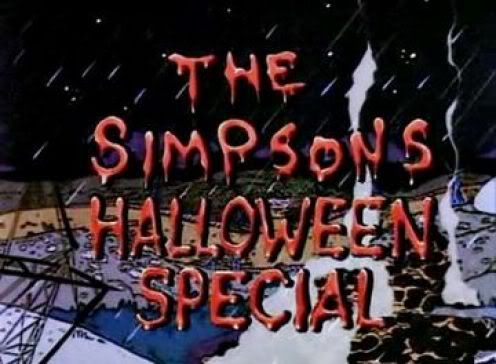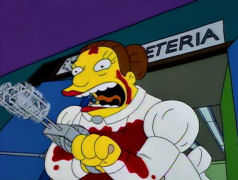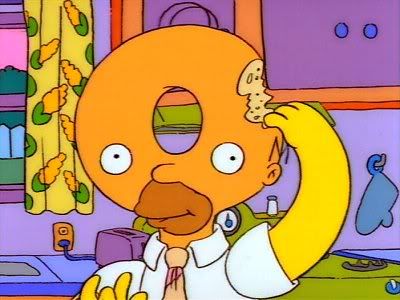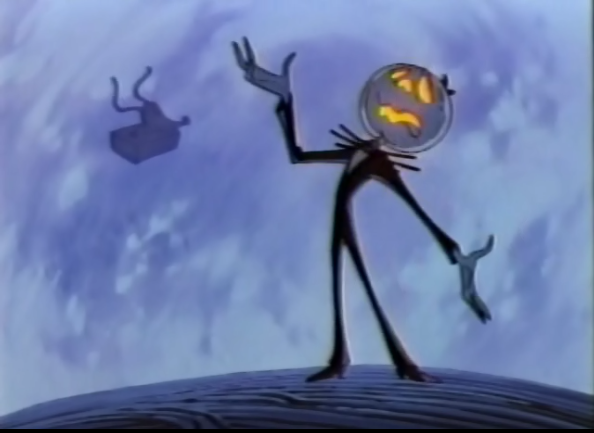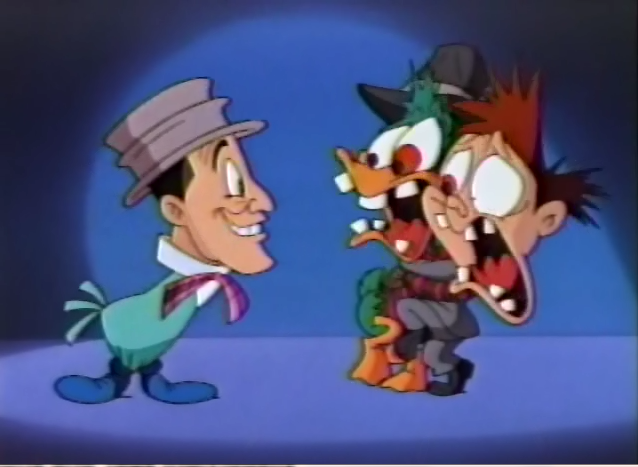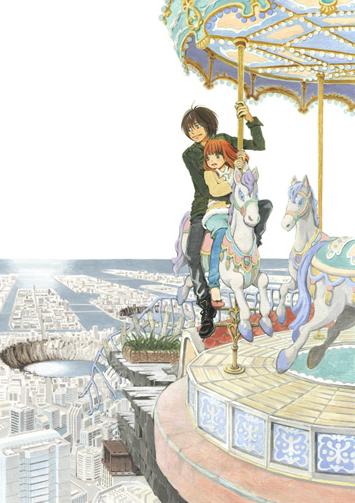Doctor Who has been one of the largest cultural landmarks when it comes to British media. For over 45 years, the Doctor and his companions have been going through time and space in search of aliens, adventure, and the occasional genocidal pepper shaker. One key factor to its success is its versatility. The show can change from over-the-top sci-fi to brooding psychological horror in a snap. You could get an affectionate tribute to someone like Van Gogh one episode, and get an Inceptionesque thriller the next. The series has gone through so many genres and mediums, that it’s only natural to get an animated adaptation somewhere along the line.
And it did. Four times in fact. So let’s see how our dear Doctor’s fared in the world of cartoons.
Scream of the Shalka

Now technically, this isn’t the first foray into making a Dr. Who cartoon. There was Death Comes To Time, a webcast featuring the Seventh Doctor and Stephen Fry, Shada, an adaptation of an unfinished episode penned by Douglas Adams, and Real Time, being exactly what it says on the title. However, those three aren’t so much animation as they are a series of illustrations. Imagine the Watchmen motion comic but with even less movement, and you wouldn’t be too far off. And since all three have since been released on an audio-only format, whatever animation they had was inconsequential. So by all means, this can be consider the first fully animated Doctor Who story.
If you want some production backstory, it was 2003. The show had been cancelled for at least 14 years, with the only new DW media being books, radio plays, and the Paul McGann movie from 1996. And with the fortieth anniversary of the series growing near, the digital branch of the BBC decided “Fuck it. If new Doctor Who isn’t gonna be on the telly, it may as well be on the internet.” So it was decided that they make a sequel series to be shown on BBC’s website. Cosgrove Hall, previously known for such works as Danger Mouse and Count Quackula, was assigned with the job of animating the webcast, with Richard E Grant cast as the Ninth Doctor. Paul Cornell, currently known for his Action Comics run and having written some of the more memorable DW episodes, was given the story to write. And so, the plans for Scream of the Shalka were set in motion. Overall, things were going smoothly… until it was announced that the series would get a proper continuation on TV, rendering Shalka from the first of a new generation to a non-canon oneshot even before it premiered. So all in all, tough shit for them.
For the plot, the Doctor has found himself in the quiet land of Lancashire. However, silence will fall as a cacophonous species known as the Shalka rise to scream at humanity into submission. With a new companion by the name of Allison Cheney, the forces of UNIT, as well as an android replicant of his old enemy the Master, the Doctor must stop these creatures from enslaving mankind and destroying this world.
This will be something I’ll say throughout this feature, and I may as well say it now. The animation is awful, the flow is poor, the designs are unappealing, and the art is mediocre at best. Honestly, it made it hard to sit through the whole thing. I know it’s a webcast from 2003, but this is from professionals. I’ve seen videos from Newgrounds back then that have better production values than this.
But where the webcast lacked in animation, it excelled in the cast. They somehow managed to get Richard E. Grant, Sophie Okonedo, Sir Derek Jacobi, and a shade of unintentional foreshadowing from a David Tennant cameo. All of them give performances ranging from decent to quite enjoyable. Jacobi in particular manages to make the role as The Master his own, with a mix of affability, some malice, and a sprinkle of camp.
And for all that matters, the story’s interesting. It’s much more brooding in comparison to the main series, with the more mature tone, less humanoid aliens, and the lack of Murray Gold music causing a vast dissonance from its counterpart. Unfortunately, it carries the old show’s burden of having slow pacing with multiple scenes where the characters just don’t do anything. But for what it’s worth, Cornell writes some well-done dialogue, and how the Doctor solves the threat by the Shalka is pretty amusing and something that only a Time Lord could figure out.
So despite the fact that it’s firmly non-canon, it’s a decent look at what could have been. If you can get over the horrendous animation and slow plot, then this might be worth your time.
The Invasion

Back in the late 60s and early 70s, networks like the BBC and ITV had the bright idea of erasing most of their archives in favor of reusing the tapes for newer programs. As a result, a large chunk of the original Doctor Who serials are either incomplete or entirely missing. Fans have desperately tried to reverse this, from discovering old tapes at Hong Kong to having plays made out of the stories. But as days wear on, lost features such as Marco Polo or The Highlanders will remain just that. However, with one serial that unfortunately lost a couple episodes, but fortunately retained the audio, it was decided to animate the missing parts and release it on DVD. And like it says up above, that serial goes by the simple name of The Invasion.
The same studio that made Scream of the Shalka was brought in to animate the missing episodes, specifically the first and fourth. But unlike with Shalka, the animation somewhat fits due to the tone, setting, and era when the original episodes were made. And it helps that Cosgrove has improved a bit. Really, my only gripe is that it doesn’t have enough of a retro feel. The sharp designs give off an extreme dissonance with the audio, giving an uncanny valley effect as characters drawn with computers recite lines recorded decades ago. It would be absolutely perfect if it could be a retread of old Hanna-Barbera animation, but it’s at least good enough for what it is.
Now for the story, the Doctor and his companions, Jamie and Zoe, find themselves stuck on 1960s England after discovering a mysterious ship near the moon. During their time, they find themselves under the scrutiny of a corporation known as International Electromatics and its chairman, Tobias Vaughn. With help from the United Nations Intelligence Taskforce, or UNIT for short, the Doctor has to unravel the secrets behind Vaughn and what his organization is up to. However, a familiar enemy will be up in the sky watching his every move.
Just missing the 200 minute mark, this serial isn’t kind to those looking for a fast-paced story. Indeed, the titular invasion doesn’t even occur until the last three episodes. But with this, it also makes sure to give great detail to the workings of UNIT, how the invasion gets plotted, as well as how the Doctor tries to uncover everything. Either way, it’s best to watch this over the course of a few days given the cliffhangers for every part.
As for the acting, Patrick Troughton’s erratic behavior is still retained in the reconstruction process. Kevin Stoney gives Tobias Vaughn a very full-of-himself demeanor, one that can’t help but be compared to how Roger Lloyd Pack played a fellow purveyor for the Cybermen during the new series. Seriously, both of their performances are very similar to each other. It wouldn’t be farfetched if the Pack didn’t watch Stoney’s performance to get a feel for his own character. As for the rest of the actors, their performance is rather casual, with acting that definitely hasn’t aged well. Overall, it’s not something I’d use to introduce someone into Doctor Who, but it’s a nice treat for those looking to see how far the show’s come since then.
Unfortunately, this practice of animating missing episodes has since been abandoned, which is a shame, given that it’d be nice to see serials such as Evil of the Daleks or Fury From The Deep be brought back through this format. Still, the rest of the lost episodes are still available through audio recordings and fan reconstructions. And maybe one day, they’ll continue on with remaking them.
The Infinite Quest

Unlike the previous attempts, this special was made to coincide with the third season, or twenty-ninth if you’re a completionist. The actors at the time, David Tennant and Freema Agyeman were brought to reprise their roles. And in contrast to the two above, this one actually got shown on TV.
On this adventure, the Doctor and Martha have found themselves on the quest to find the key to one’s desire. They’ll have to face off against oil pirates, giant bugs, and robot jailers. And through it all, they must brace themselves against the one of the most feared space raiders of all time… Rupert Giles.
This time not having Cosgrove Hall as an animation studio, the production quality gets taken up several levels, with a bit of CG added into the mix. Admittedly, the character design still leads to some unfortunate uncanny valley (there’s just something off about Toon!Tennant’s eyes), but it still beats Shalka by miles. Alas, this will be considered the peak of how Doctor Who has been animated so far, especially when you see the feature below.
With the plot, the pacing’s so fast you can barely take a whiff of what’s going on. It’d be like if the first season of Jackie Chan Adventures was condensed into a couple episodes. Just a few minutes into one situation, the story shoves the characters into another. It makes quite an interesting contrast to the last “treasure hunt” plot Doctor Who did with the 1970s arc “Key To Time”, which took 26 episodes to finish. Granted, this oneshot’s original presentation as a series of shorts shown once a week probably accounts for how poorly-paced it comes off as when viewed all at once. So, I’ll probably be better off blaming the DVD producers for editing it into a singular episode rather than what it was supposed to be.
As for the acting, David Tennant and Freema Agyeman retain their quality from the main series, though the former hams it up quite a bit in comparison (and since it’s Tennant, that’s saying a lot). Anthony Stewart Head, obviously known for Buffy The Vampire Slayer, somewhat known for already having a guest stint on the show, and quite uncommonly known for actually being asked to play the title character back in the 90s, is very brooding in his role. However, this tone doesn’t completely work given that his role looks like a swashbuckling pirate with a gas mask.
All in all, it makes for an interesting venture. And unlike Shalka, there’s nothing to stop this from being considered canon (though there’s a nil chance that events from here will ever get referenced). However, the use of talking robot animals and stereotypical pirates that seem oddly reminiscent of Ms. Frizzle mean that a younger audience will probably find more enjoyment out of this than the older fans.
Dreamland

So for this episode, the crew decided to animate this in CG, and AAGH, WHAT THE FUCK KIND OF ANIMATION IS THIS? Stuff like Reboot or Beast Wars looks like something out of James Cameron compared to this, and they came out more than a decade ago. Hell, it looks more like Thunderbirds than actual computer-generated work. Forget what I said about how awful Shalka’s animation it was, this makes that look like a Nick Park production. Honestly, this is just pitiful.
Rage at the production values aside, the Doctor finds himself as Area 51 during the height of the Cold War. With the help of a diner waitress and kind-of-but-not-quite-Fonzie, he gets himself into trouble with the US Army, where a colonel plans to use alien technology to one-up Russia in the arms race. But since they’re aliens, he gets a pretty raw deal and the Doctor has to save the world’s ass yet again from an invasion.
And now with performances, David Tennant is a bit more somber to correspond with how the live-action Doctor was like by the time this was being made, with a bit less ham and some more brooding when it comes to dealing with alien genocide. David Warner, who most readers here will probably know as Ra’s Al Ghul, kind of phones it in when playing the main villain. It’s still alright, but there nothing out of him that feels anything special. Also, the leading actress, Georgia Moffett, manages to get out a convincing enough American accent. Nothing out of the rest of the cast that stood out at all, though Moffett aside, the casting director did a good job at getting actual Americans to play the characters, with Clarke Peters from The Wire getting a tiny role from this. Sucks that the animation can’t capture the emotional range from the acting though, making it so that it feels like I’m watching puppets.
So by all means, this is just really another oneshot to get out of the Tenth Doctor before he was going away. The story’s nothing special, the acting’s nothing different, and the animation’s awful, so unless you’re really, really, holding out for something animated and involving the Doctor, avoid this.
And so that’s it. Three Doctors, four adventures, and lots of bad animation in-between. All I can hope is that they get someone decent by the time they make a cartoon featuring 11 and Amy.
Originally posted on Monday, November 8, 2010.









